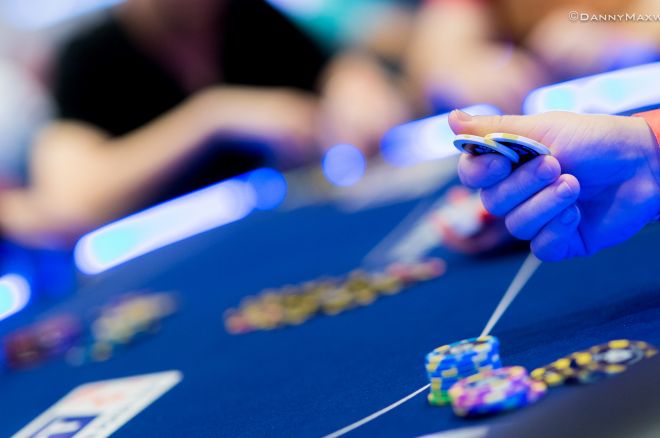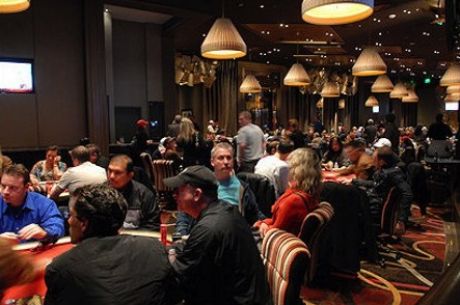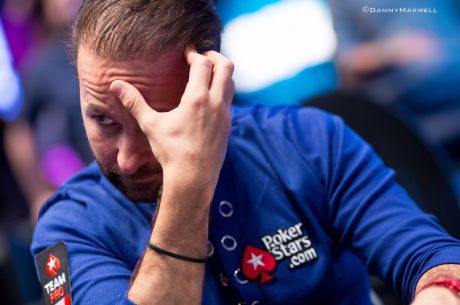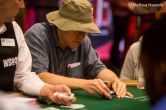��Game Flow�� and the Mechanics of Range-Building in No-Limit Hold'em

Sometimes our opponents bet and raise, and sometimes they don��t. It��s our job to figure out what��s making them choose one way rather than the other.
Usually their decisions are mostly based on the cards they hold. If you assume that opponents are conditioning their betting decisions on the hands that they hold, you will often be correct. You also will be on the right track to develop counter-strategies that are robust against many kinds of opponents.
Of course, opponents don��t always condition their decisions on their cards. However, there is such a thing as timing, and having an eye for it is important.
Let��s say it would ordinarily be appropriate for your opponent to open with 20% of his hands, but there��s also a 1-in-4 chance that he thinks that now is the right time to steal no matter what. If that��s the case, you can expect a raise not 20% of the time but (20% + (1/4) * 80%) = 40% of the time.
Even just a 10% chance that someone has ��given himself the green light�� will turn a 20% raiser into a (20% + (1/10) * 80%) = 28% raiser. The difference between raising 20% of the time and raising 28% of the time is enormous, as anyone who has ever tried to raise a 28% range from early position against tough opponents can affirm.
This simple arithmetic is a big reason why what people call ��game flow�� and ��timing�� is still relevant even in this advanced age of poker. Small differences in the moment-by-moment tendency to pull the trigger have enormous consequences for the size and shape of an opponent��s range.
Two almost-consecutive hands at the final table of the 2015 World Series of Poker Main Event are useful for illustrating this very point. Although we can��t know what went into the players�� decisions without being in their heads �� and indeed players themselves don��t always perfectly understand their own decision-making processes �� these are at least the kind of situations where timing can be relevant.
The first came on Hand #12 of the final table with eight players left. It folded around to Neil Blumenfield in the small blind who raised with A?7?, then Ofer Zvi Stern reraised from the big blind with K?2?.
Blumenfield had been raising and reraising frequently during the first orbit-and-a-half of the final table, and Stern could easily have thought both that Blumenfield was opening widely and that he would back down to pressure. This reraise is, arguably, a situation where a player with Stern��s temperament and in Stern��s situation will choose to simply reraise with many or all of his hands.
Blumenfield might well have suspected this to be the case �� he reraised and forced Stern to give up the pot.
Two hands later on Hand #14, Stern raised the button with A?5?. Many players open a lot of hands on the button, but aggressive players who have just had a three-bet picked off in a blind battle really open a lot of hands on the button. A?5? is not even close to the worst hand one can have in this spot, but it is easy to imagine that Stern would have risked this opening raise with hands as bad as Jx2x-suited, 6x4x-offsuit, or worse. We might speculate that this is what Josh Beckley was thinking, as he took the opportunity to reraise Stern from the big blind with his 10?4?.
It is dangerous to attribute to game flow what is better explained with the ordinary mechanics of range-building. It is also dangerous to act on suspicion of an opponent��s imbalance by making one��s own range imbalanced, as arguably both Blumenfield and Beckley did in the two hands described above.
Finding spots where opponents might be making a play regardless of their cards, however, is nonetheless a valuable skill. A suspicion that a 20% range or a 30% range has turned into a 75% or 100% range can have a drastic effect on your best counter-strategy, and a willingness to act on these suspicions can let you earn many more pots than you otherwise would.
Thinking Tournament Poker by Nate Meyvis is now available both at Amazon and at nitcast.com. Be sure also to check out Nate and Andrew Brokos on the Thinking Poker podcast, and for more from Nate visit his blog at natemeyvis.com.
Want to stay atop all the latest in the poker world? If so, make sure to get PokerNews updates on your social media outlets. Follow us on Twitter and find us on both Facebook and Google+!









